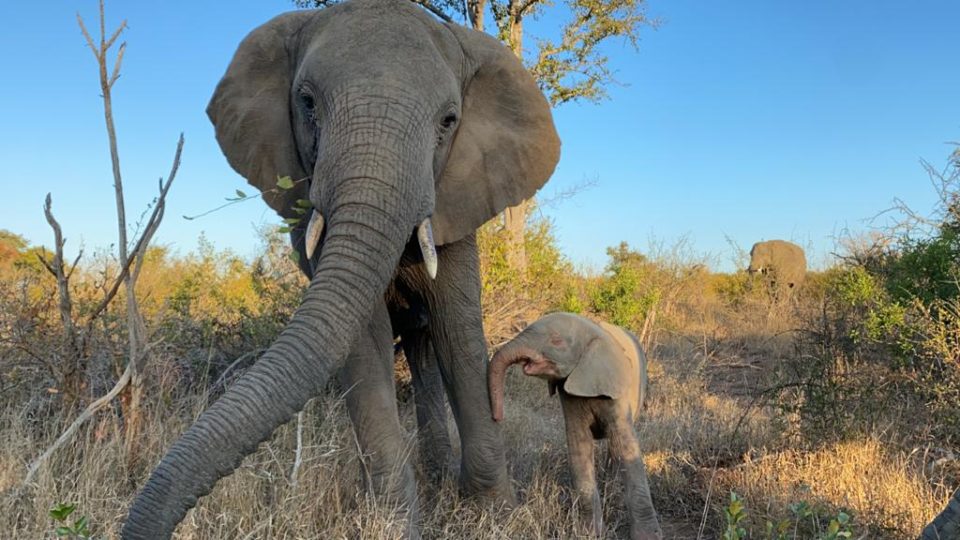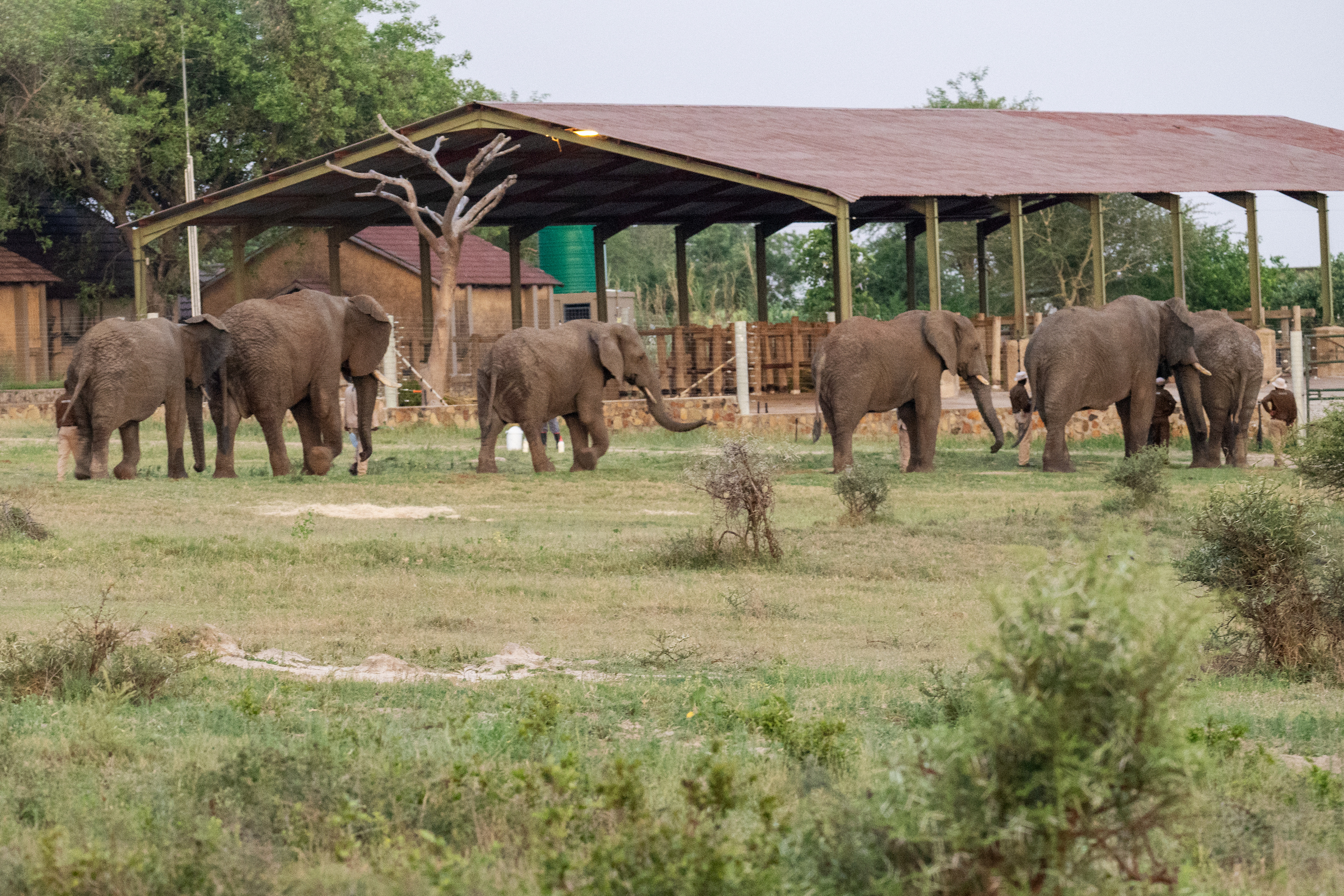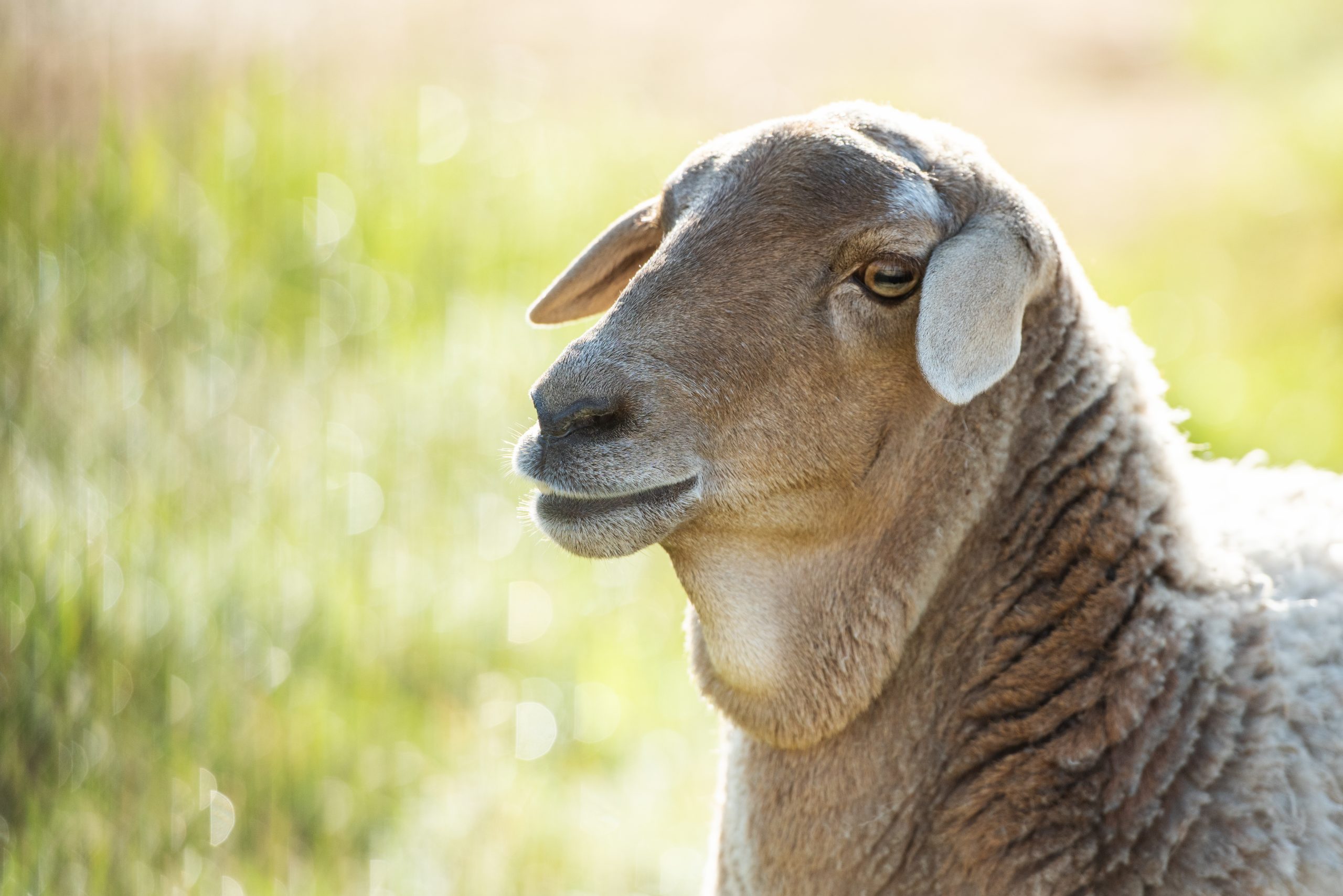A True Survivor, Kumbura ~ An Orphan Successfully Integrated
Meet kind Kumbura, another orphan that has been lovingly accepted into the Jabulani herd Kumbura’s incredible story reveals so much about this special elephant, about conservation and about the need for a herd. It is a tale of going above and beyond, not taking no for an answer, and holding on, even when you feel alone. Below we look at some fascinating insight into Kumbura’s past that may contribute to the important elephant she is in the Jabulani herd today.
Kumbura and Timtinyisa are currently the two orphans successfully integrated into and accepted by the herd, with Khanyisa almost fully integrated too. They spend all day and night with the rest of the herd, foraging in the reserve, splashing in dams, and exploring the wilderness from sunrise to set, together.
Kumbura has been particularly sweet and curious in a very gentle and attentive way with little albino calf, Khanyisa as the new elephant is integrated gradually into the herd. It has been beautiful to see her motherly, or “allomotherly” side strengthening, especially considering her unfortunate start to life.
Kumbura has been particularly sweet and curious in a very gentle and attentive way with little albino calf, Khanyisa as the new elephant is integrated gradually into the herd. It has been beautiful to see her motherly, or “allomotherly” side strengthening, especially considering her unfortunate start to life.
Kumbura is a true survivor
In 2009, due to a new fence being erected on a privately owned farm over the Limpopo River, an elephant herd had been displaced and was moving through the farms bordering the river. Kumbura was seen wandering on land close to lodges and campsites, on the border of Botswana and South Africa. (Read the full story here!) She was traumatised, alone and vulnerable and there was no sight of her mother or herd, but rescuing her was difficult as she bolted after one attempt. She was alone for three months before she was finally rescued (much more willingly this time, as though she knew she was being helped) and arrived at Jabulani in August 2009 at about 12-24 months of age. Born in around 2008, Kumbura’s name is a tribute to HERD Founder, Adine Roode’s late father, Johan Roode who passed away in the same month that Kumbura arrived. It means, “To remember.”
Very little information is known about what happened to her mother and her original herd. But her health had extremely deteriorated due to the stress and trauma that she gone through, says Elephant Manager, Tigere. Because of that she could barely walk, so she spent a length of time in the homestead and received supplements like vegetables daily – all to ensure that she would survive. Most people did not think that she would not survive due to her bad health. But she continued to recover over the months.
“I believe that because we had some young elephants of her age, she was able to bond with them and receive a lot of the comfort she needed during those dark moments of her life,” Tigere says. “Kumbura then started accompanying the rest of the herd in the bush and she began to gain confidence as she realised she had a new family.” Apart from all the females who offered her their support, Sebakwe, the dominant bull, also played a major role in comforting Kumbura. There were many moments when she tried to suckle from Sebakwe, but this was obviously all was in vain as Sebakwe is a male elephant. Even though all the females had babies to suckle they couldn’t let her suckle from them – having to provide for their calves first and foremost and prepare for new babies in the future. Luckily, Kumbura could feed on her own and she soon settled into the herd completely.
 A flashback with Kumbura, Limpopo, Pisa and Tokwe
A flashback with Kumbura, Limpopo, Pisa and Tokwe
Kumbura is a delicate and slender elephant with fewer wrinkles than many of the other elephants in the herd. She is a similar age to Pisa, but she looks quite a bit older. Her tusks are average in size. Late in 2016, Jabulani received another orphaned elephant, who was later named Timisa. Kumbura became an allomother to Timisa and certainly played the most important and successful role in raising Timisa. Kumbura walked side by side with Timisa in every activity she could. “I once witnessed Kumbura blocking Timisa from swimming in deep water during the swim in the dam. She always made sure that Timisa would keep to the shallow waters. It made us think that she may have had a traumatic experience with water before, for instance where she was found originally, alone, along the riverline.”

Kumbura’s love for baby elephants shows that she may have had a younger sister or a younger brother, or perhaps her mother was a Matriarch, as she has vast experience with the babies. We can also see this in how she interacts with little Khanyisa, in the presence of other females at the moment. Kumbura is a lovely young female elephant with genuine love for calves and there is no doubt that one day she will become a phenomenal mother or even a Matriarch. She has a natural empathy and instinct to protect that makes her a great asset for accepting new orphans into the herd. Despite what Kumbura experienced, the Jabulani herd have given her the strength and support that she has needed to thrive once again. She was quite a nervous, sensitive and delicate little calf initially, with much self-doubt, but she has really grown into herself and become stronger over the years and now plays an important part in the social hierarchy of the herd.






No comments yet.